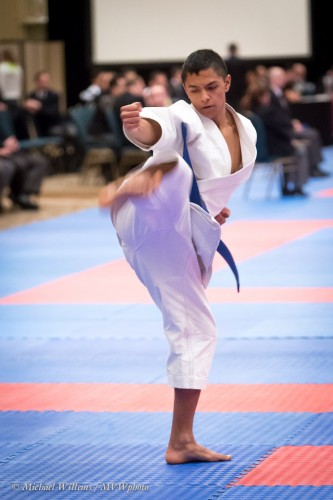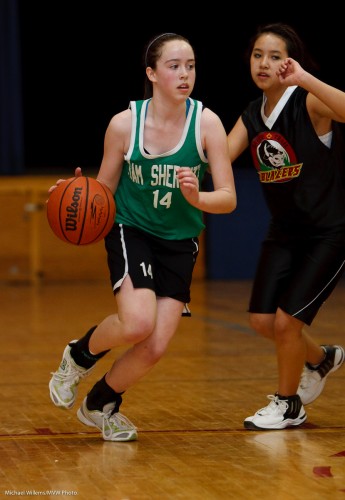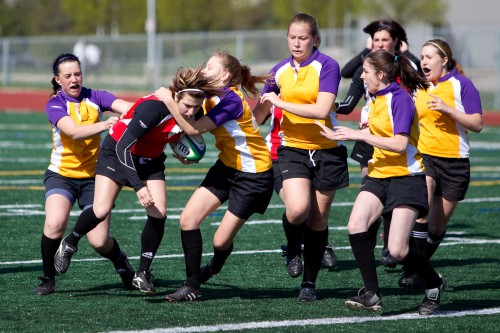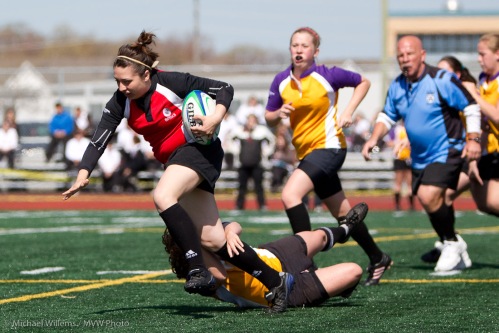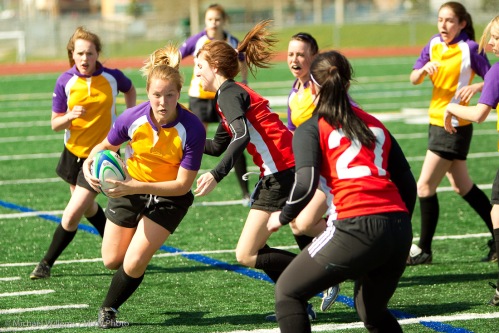Today, a few more words about the “real life” Karate Championship shooting I did on Friday and Saturday.
As you read yesterday, the light was low, meaning I had to shoot at 10,000 ISO (yes, ten thousand) at f/2.8 to get to a mere 1/160th second, which is kind of the minimum I would like. Even at that speed, motion blurs:
But what were the other challenges, other than the fast lenses and high ISO needed? I ask because while I have pointed out many times that photography is basically simple, it is in meeting the limits, overcoming the problems, that you get to be really good.
One: the dim light also makes focusing unreliable. Even on my 1Dx, I got a lot of incorrectly focused shots. Remedy: shoot more; focus as accurately as you can using cross-point sensors (the centre one, on most cameras, is always cross-point), and focus on cpntrasty areas (the collar, for instance).
Two: the very red nature of the light – about 2,500K in this ballroom, redder than a normal incandescent lightbulb – is not good even when you set the camera to “Tungsten” white balance. So you need to correct it afterward – meaning RAW is best.
Three: RAW is slower, so you lose some shots due to the camera catching up with writing to the memory cards.
Four: the salmon and blue floor mat mean that in every picture, the bottom of the white suits looks either salmon or blue, which makes it look like the white balance is off. It’s not – it’s just the tungsten light reflecting off the floor.
Five: the competitors move unpredictably, so you need to:
- Shoot wide to ensure you do not cut them out of the frame.
- Use continuous focus (AI Servo/AF-C).
- Shoot sequences of shots.
- Use not one focus spot, but several (9 or more), to give the camera a chance to track the subject.
Six: in Karate, the subject turns away from you much of the time. The judges are on the other side, so lots pf shots of the subjects’ back. Just be ready to shoot in the few seconds you have, when the subject is looking your way.
Seven: the background is not of your choosing. Do the best you can, and throw it out of focus as much as you are able.
As you see here, there’s quite a lot of real life “working with limitations” going on in a real shoot – not just the basic thinking of “ISO+Aperture+Shutter = Exposure”.
___
NOTE! Want to learn how to use off-camera flash using “Master-Slave”/”Commander-Remote” TTL flash control for your Nikon or Canon system? Do not miss my evening course in Hamilton on Friday: http://cameratraining.ca/Flash-TTL.html. This and other upcoming workshops on http://cameratraining.ca/Schedule.html. Book now to guarantee your place.

